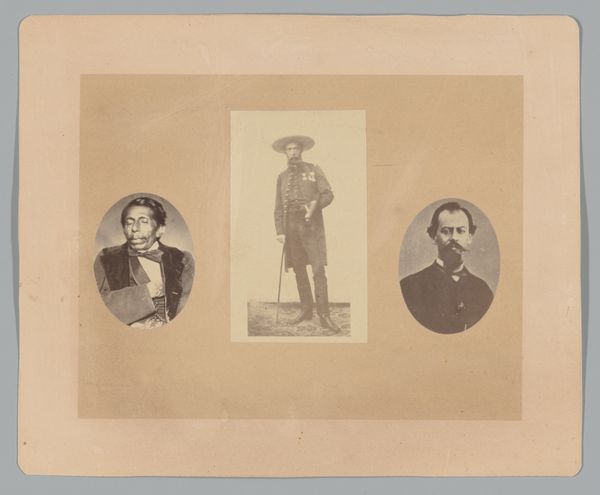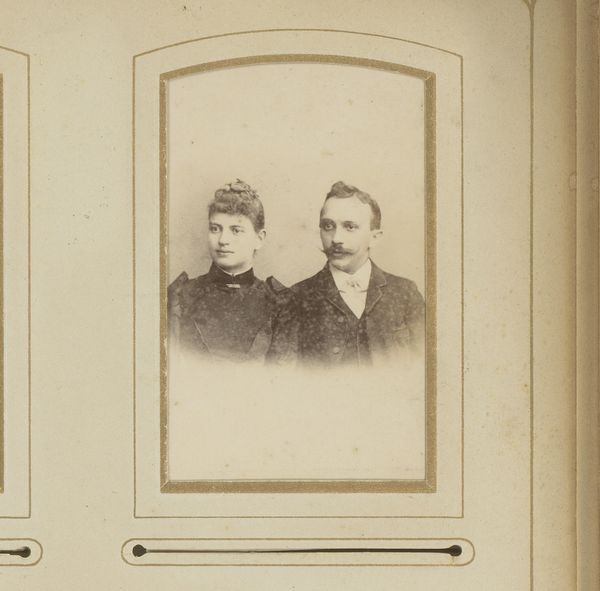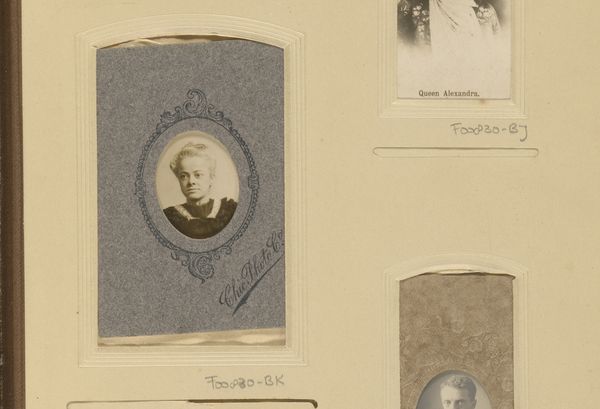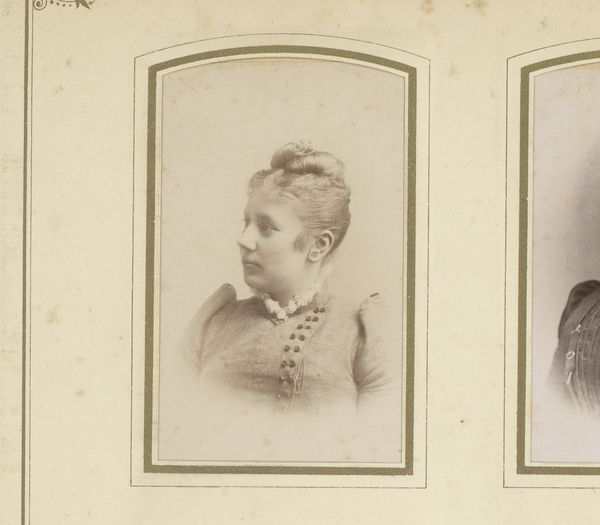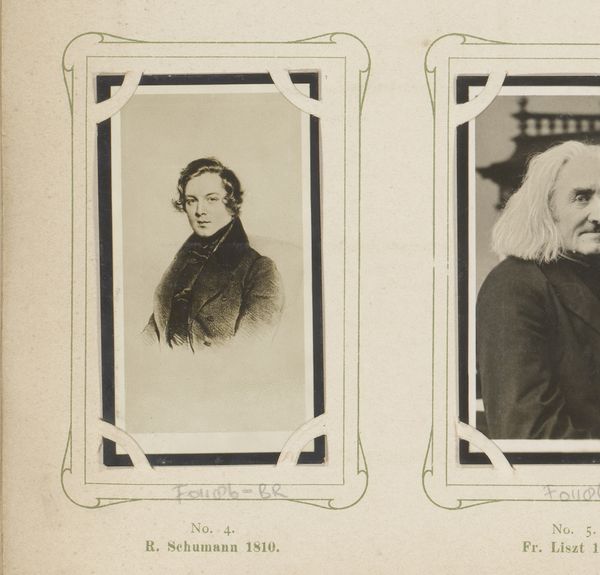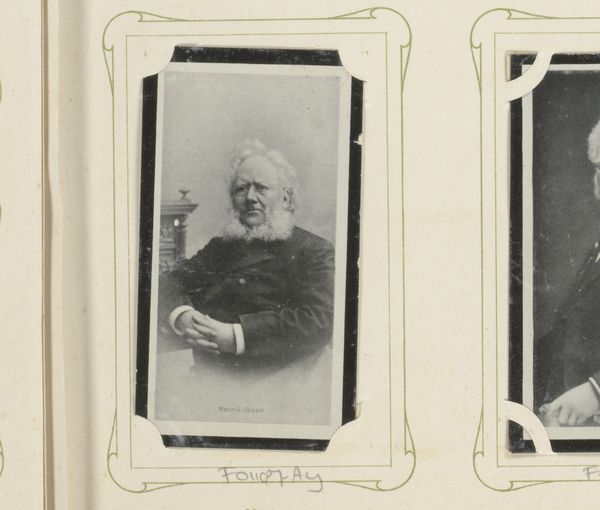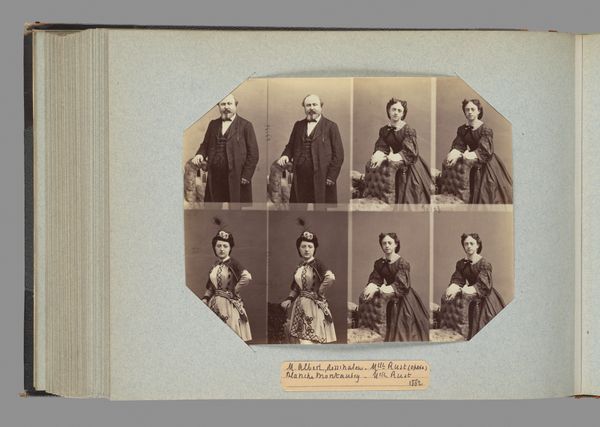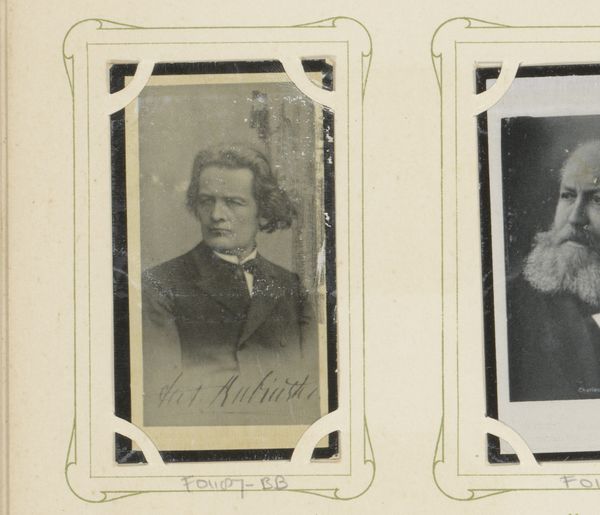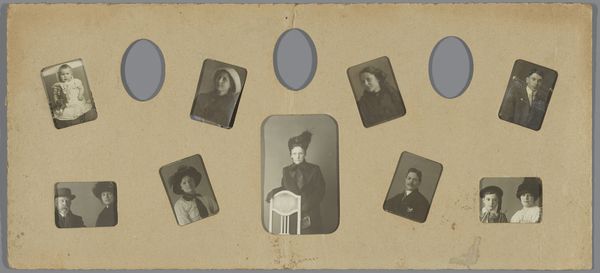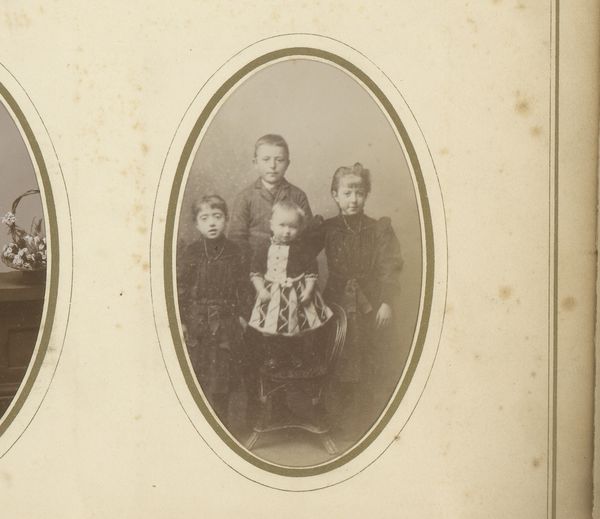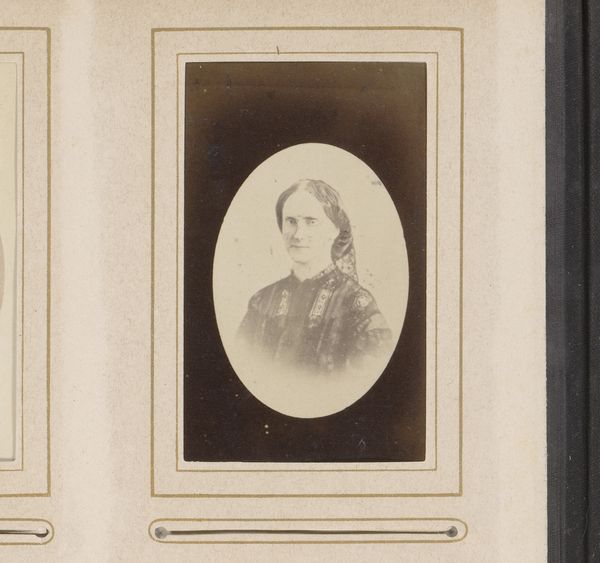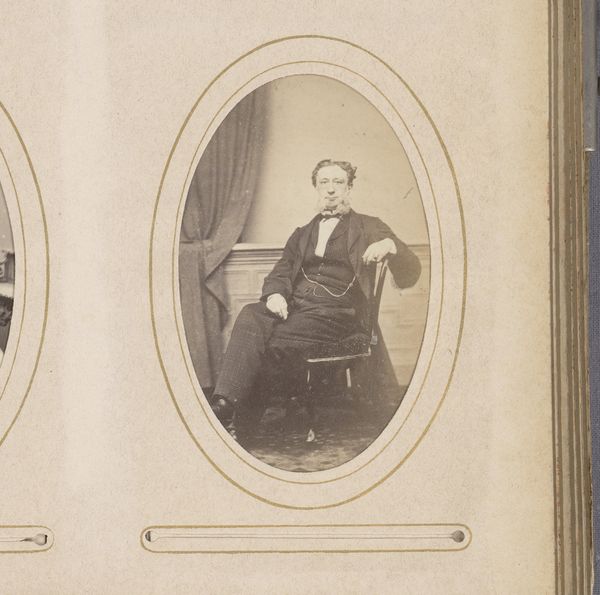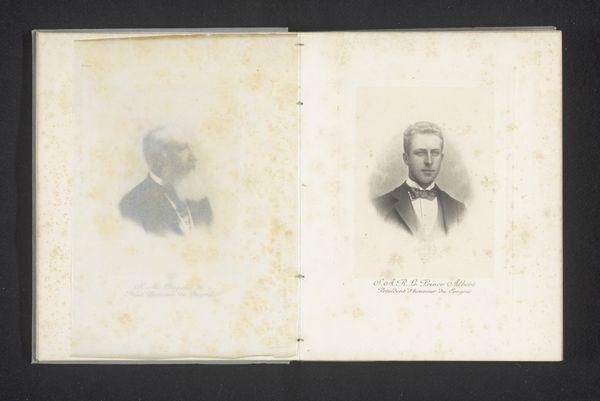![[Three Portraits] by François Aubert](/_next/image?url=https%3A%2F%2Fd2w8kbdekdi1gv.cloudfront.net%2FeyJidWNrZXQiOiAiYXJ0ZXJhLWltYWdlcy1idWNrZXQiLCAia2V5IjogImFydHdvcmtzLzg0ZDQxMjE5LWZjZDUtNDcxMy1hNWE1LWM4MDJmZTY1NmQ1YS84NGQ0MTIxOS1mY2Q1LTQ3MTMtYTVhNS1jODAyZmU2NTZkNWFfZnVsbC5qcGciLCAiZWRpdHMiOiB7InJlc2l6ZSI6IHsid2lkdGgiOiAxOTIwLCAiaGVpZ2h0IjogMTkyMCwgImZpdCI6ICJpbnNpZGUifX19&w=3840&q=75)
photography, gelatin-silver-print, albumen-print
#
portrait
#
water colours
#
photography
#
gelatin-silver-print
#
albumen-print
Dimensions: Image (Left, oval): 5.5 × 4 cm (2 3/16 × 1 9/16 in.) Image (Center, oval): 5.5 × 4 cm (2 3/16 × 1 9/16 in.) Image (Right, oval): 5.4 × 4 cm (2 1/8 × 1 9/16 in.) Mount: 18.2 × 22.2 cm (7 3/16 × 8 3/4 in.)
Copyright: Public Domain
Curator: Welcome. Here we have François Aubert's "[Three Portraits]" from 1867. The work before you, combining gelatin-silver and albumen prints, offers an interesting case study in photographic portraiture of the time, showcasing, through an aesthetic and physical mounting format that also carries semiotic weight. Editor: They appear as floating ovals! Almost as if the photograph has cut and pasted them together… But there's an immediate sense of seriousness in the visages, a sobriety of purpose radiating outward. The man on the right with the faint facial hair gives me a particularly modern impression, actually, in his eyeglasses. Curator: You are right, there is an undeniable gravitas but Aubert’s artistic intention remains in its original form of display as a product available for social consumption within bourgeois structures. Photographic albums became increasingly prevalent at this period, becoming fixtures in affluent homes, acting as artifacts representing socio-economic stature. The poses themselves are representative of how elite bourgeois subjects in that period consciously styled and represented themselves for posterity. Editor: And there's that slightly off-putting brown tint that ages them further, adding to the feeling of temporal distance. As portraiture, it is more fascinating, as far as I am concerned, by what it chooses not to show – lives briefly captured by the gaze, but elusively contextualized. They are set in ovals of nothingness... framed by absences. Curator: These images reveal not just individual faces but wider shifts in visual culture. The rise of photography democratized portraiture somewhat, though its accessibility remained uneven, still reflecting societal inequalities in practice. To think of their arrangement also opens doors onto ideas surrounding collecting and display within burgeoning institutional or pseudo-institutional frameworks. Editor: I appreciate that, in viewing their faces, their image quality is startling given its age. Despite my projection, which imagines the limitations or struggles they must have endured, one would only be imagining... But they speak back to this with an authority, the very presence you speak of as they defy what assumptions could be easily attached. Curator: Thinking through these various lenses adds richness and depth, doesn't it? Thanks for sharing that critical insight with me today. Editor: My pleasure. These early portraits are like historical palimpsests… they continually encourage the uncovering of fresh meanings with each generation of viewing.
Comments
No comments
Be the first to comment and join the conversation on the ultimate creative platform.
